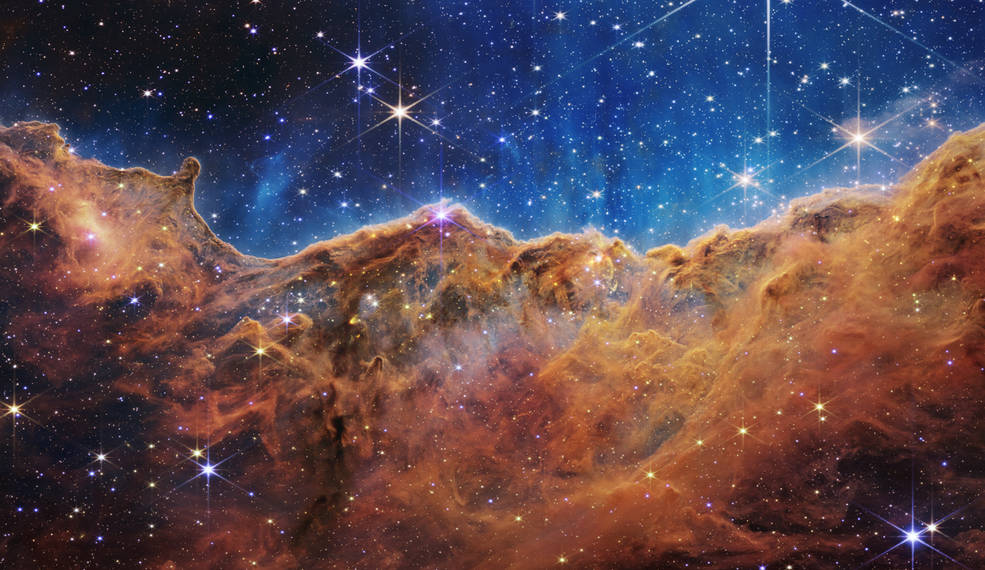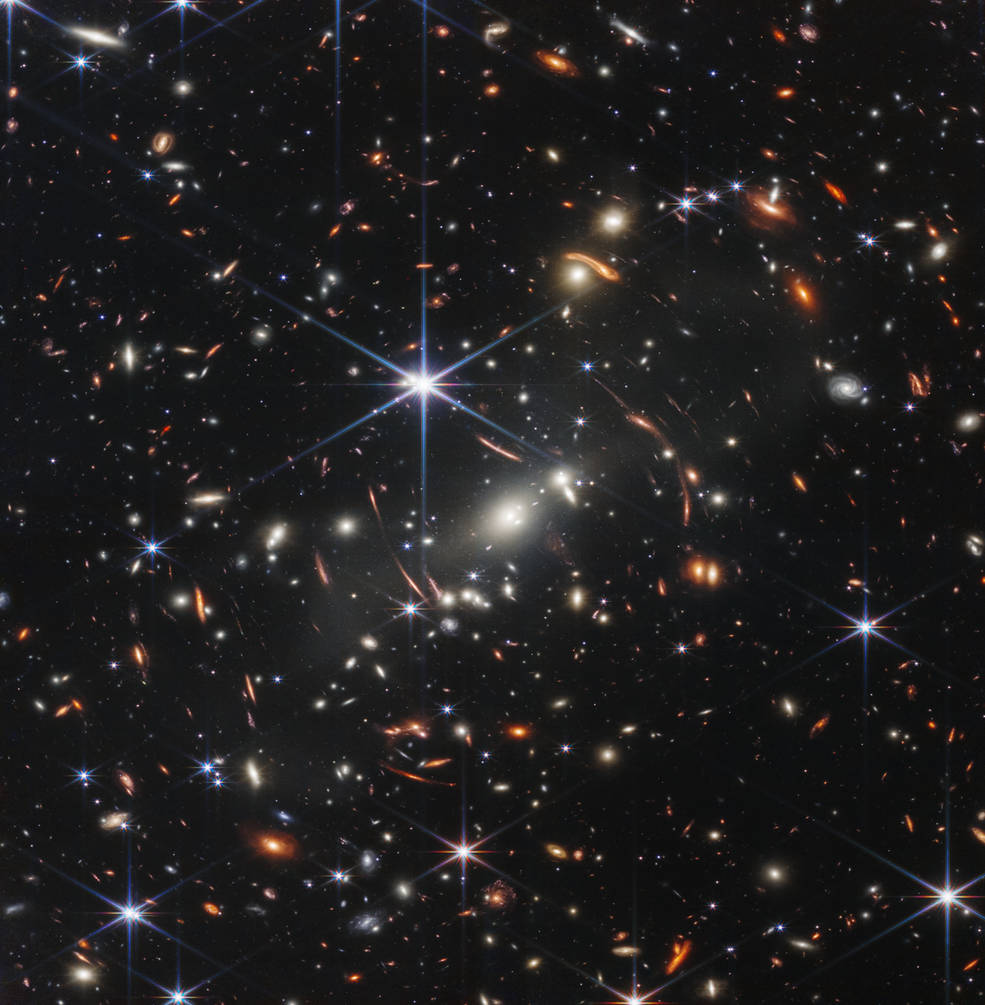News of the vast and the minuscule
Two machines fired up this month to help us see into the extremes of being – the cosmically large and the incredibly tiny. I’ve witnessed both searches, and, watching the experts, I’m catching on to the importance of seeking out where we came from and what we’re made of.
‘Working even better than hoped’
On vast end of the spectrum, NASA’s James Webb Space Telescope, which has been quietly unfolding a million miles from earth after its December 2021 launch, revealed its first images to the public July 12.



You’ve likely seen these photos: jewel-clear star-scapes that seem more like an imaginative artist’s rendering of what stars could look like – rather than the stars themselves. Yet there they are. One even shows time bending space. [photo credits: NASA, ESA, CSA, and STScI]
To the scientists who planned and now work on JWST (many of them from Cornell, my connection), these are not just beautiful pictures but data: facts to lead them toward better understanding of what’s out there. One key quest is for biological life. Cornell astronomer Nikole Lewis is a principal investigator for a team studying planets in the TRAPPIST-1 star system, searching for, among other things, atmospheres that would support life.
“JWST will do more than take awe-inspiring pictures of the universe around us, it will allow us to determine what stars, galaxies and planets are made of and the processes that gave rise to them,” Lewis said. “These first JWST observations highlight the windows into our universe that it has opened, allowing us to see the previously unseen.”
Cornell researcher voices were everywhere in media coverage of the new JWST images. I shared many of these comments and insights on Twitter, my small contribution to this vast effort.
‘The ultimate reductionists’
Meanwhile, in a 27-kilometer tube under the French-Swiss border, particle physicists renewed their quest to break matter down into its very smallest parts.
Not so widely publicized as JWST’s first photos but no less extreme, research at the Large Hadron Collider restarted this month after a three year pause for upgrades. The particle physicists are back to smashing particles together and taking pictures of the subatomic carnage with a camera the size of a six-story building.
This begins a new era (the physicists call it a “run”) of data collection as the particle people break matter down into smaller and smaller parts to see what everything – including those galactic clusters and exoplanets imaged by NASA – is made of. And, perhaps more important, why it all holds together. That’s the part that blows my mind.
“We’re the ultimate reductionists,” Peter Wittich told me. He’s a professor of physics in the College of Arts and Sciences at Cornell and director of the Laboratory of Elementary Particle Physics. “What we do at LHC is to pull everything apart into the most fundamental pieces.”
I learned more about what these reductionists are up to, smashing all those particles, as I reported on a part of this project, a grant supporting Cornell scientists.
Cornell researchers contributed to the 2012 discovery at LHC of the Higgs Boson particle, the last piece of the Standard Model of physics. This was a big deal…but the Standard Model is incomplete, Wittich told me. For example, cosmological observations confirm the existence of something called dark matter, which is not captured in the Standard Model.
In another puzzle, the Standard Model holds that there are equal amounts of matter and anti-matter in the universe; however, no one knows where the anti-matter is.
Hello? There’s just as much anti-matter as matter out there and NOBODY KNOWS WHERE IT IS?! This is truly frightening. I personally believe there’s a large cache of anti-matter under my bathtub drain, but I’ll write another story about that.
For now, I’ll say that I’m excited to connect to the minds that connect to the extremes of existence – distant and pervasive, huge and subatomic. Out There and Everywhere. I come away from this week feeling as though we’ve broken something open. “We” as in humankind; I personally am simply watching – and tweeting once in a while.